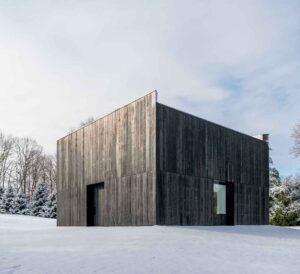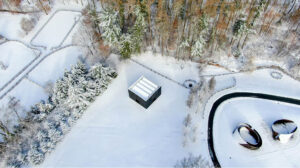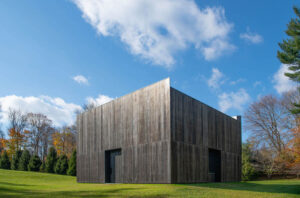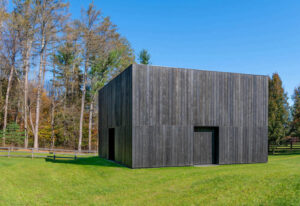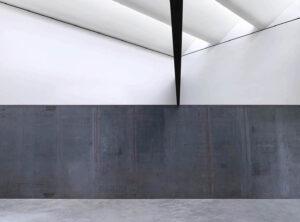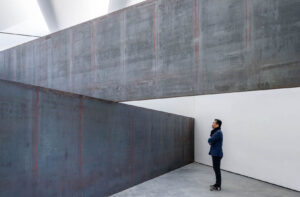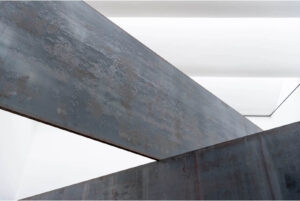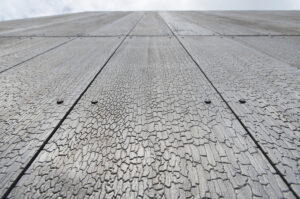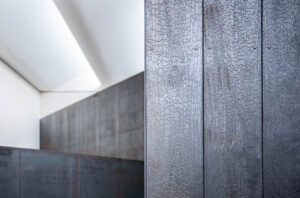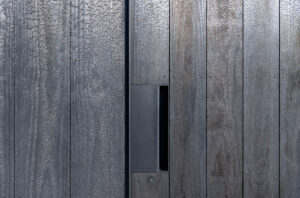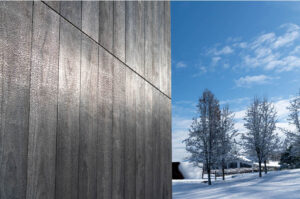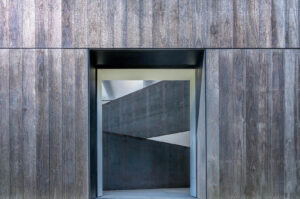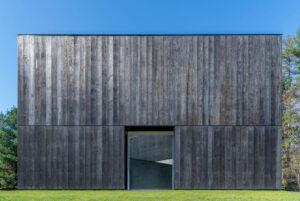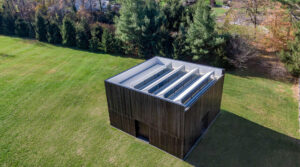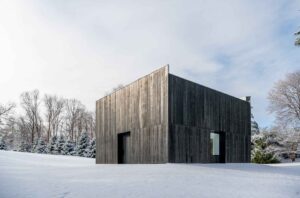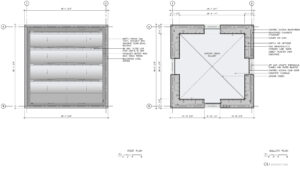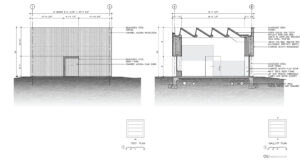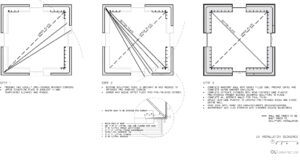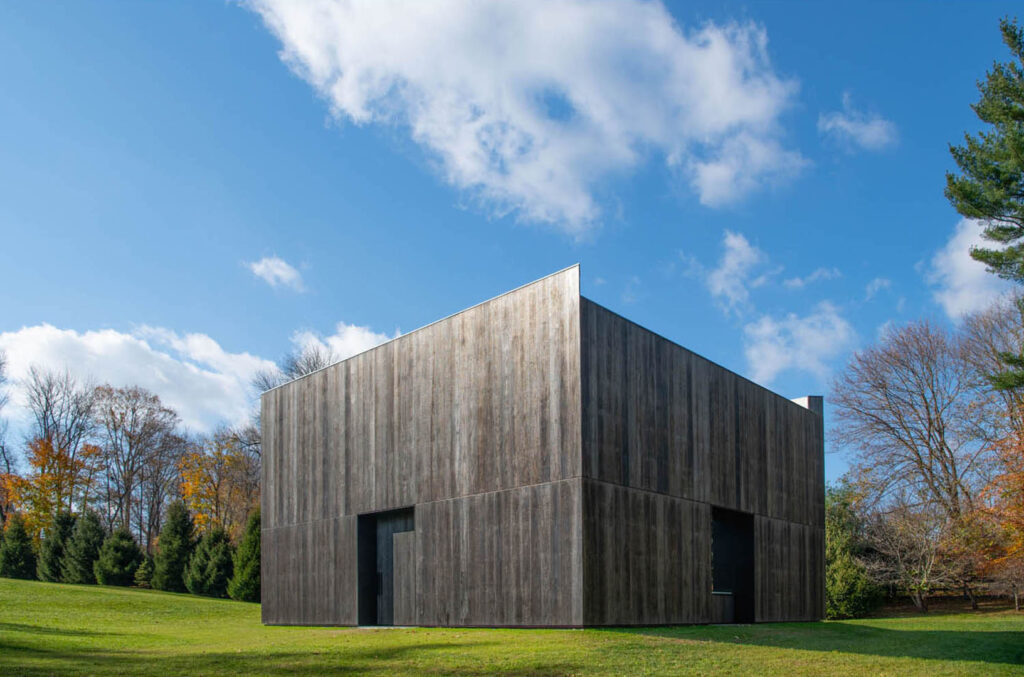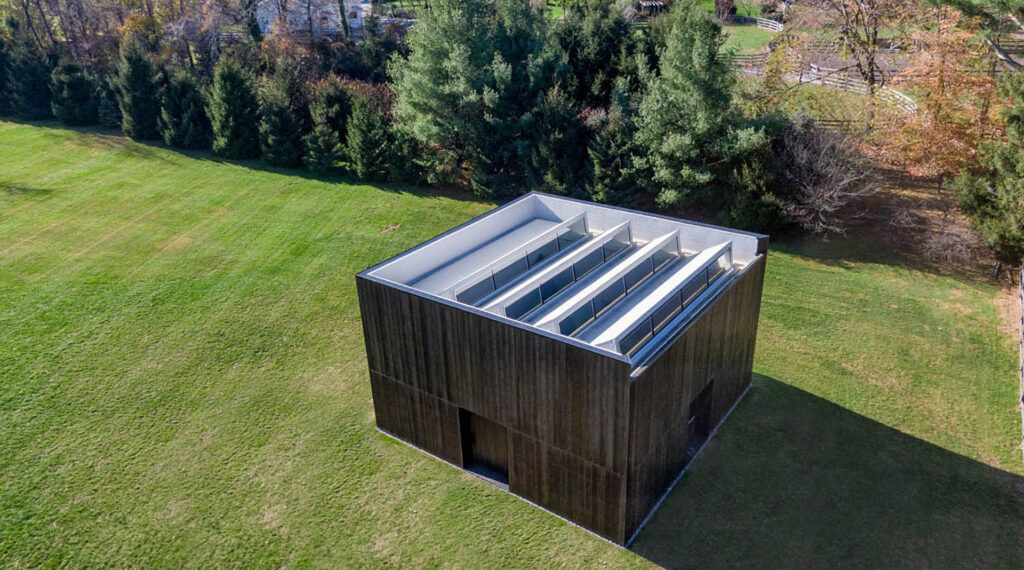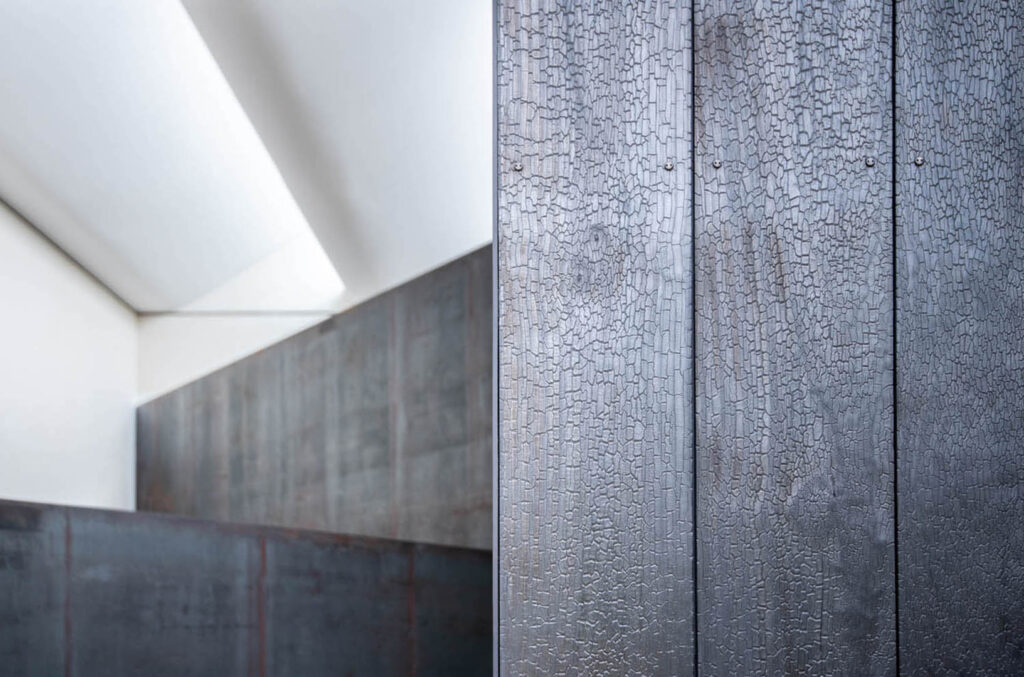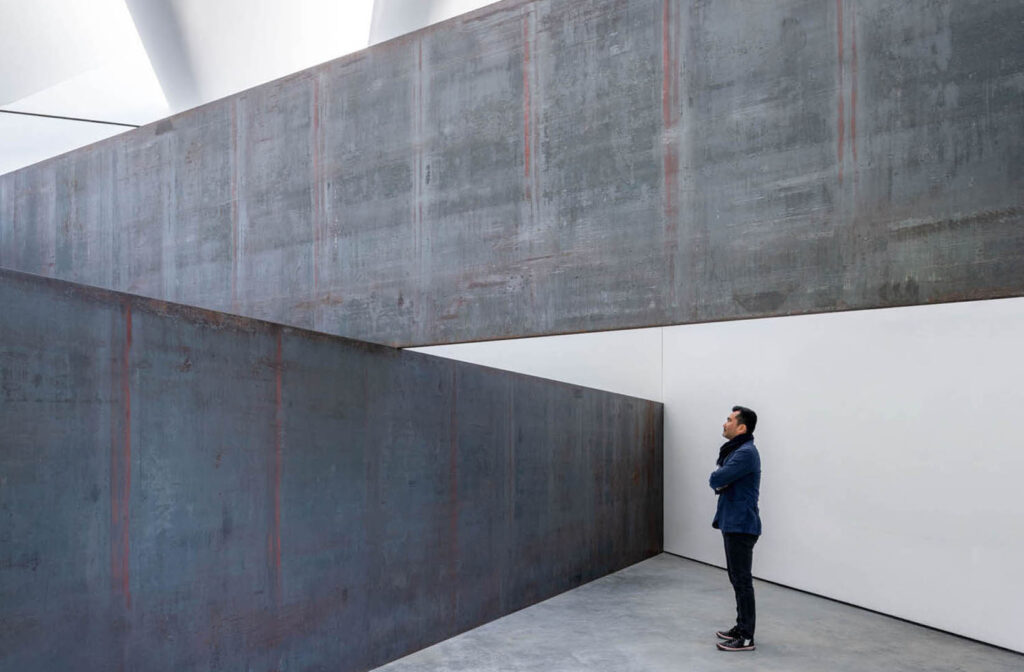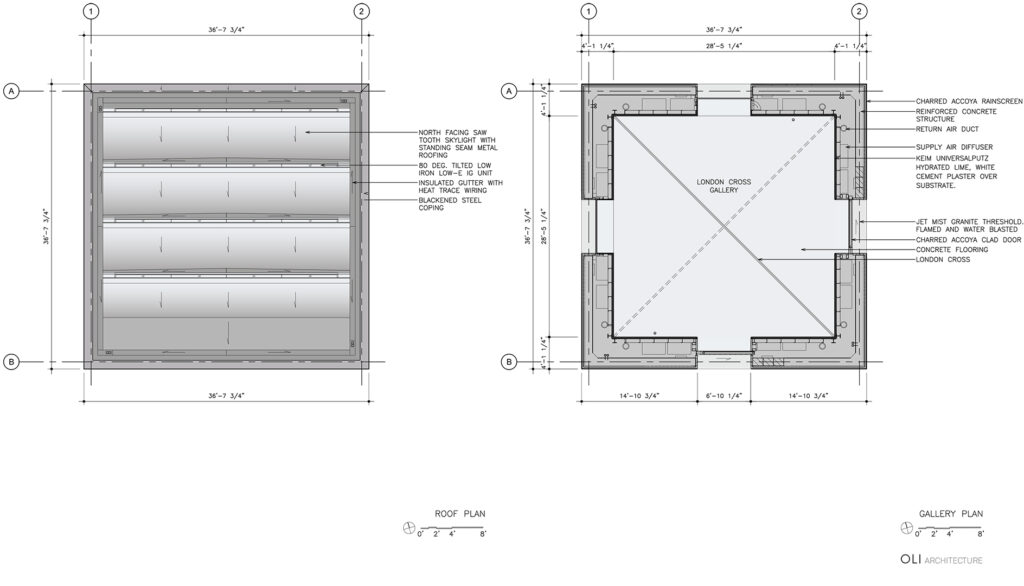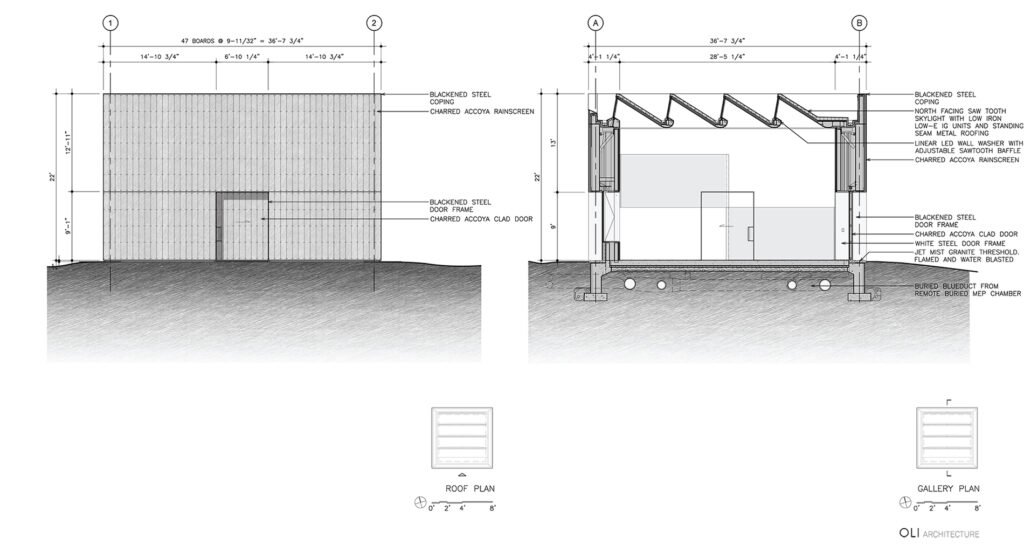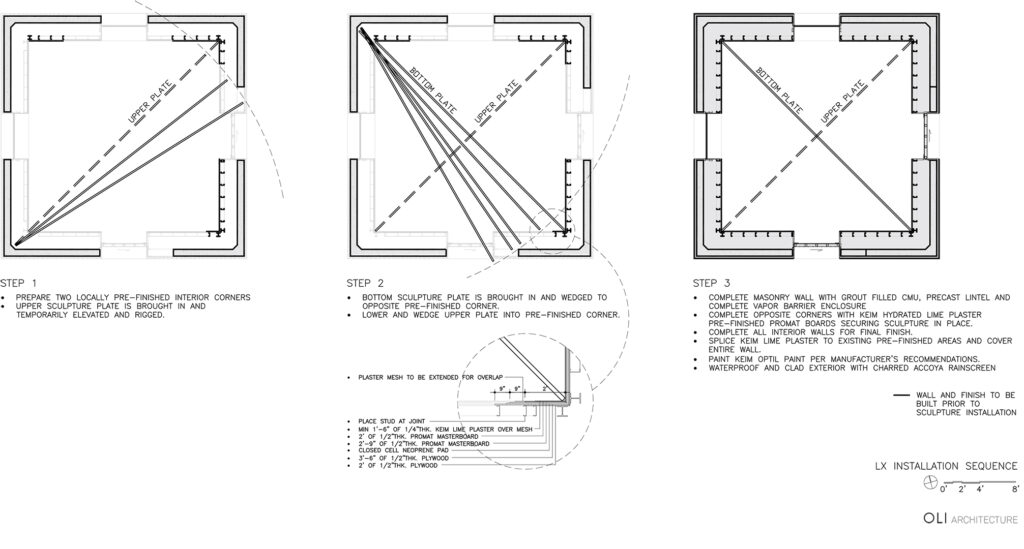Design: 2015-2018
Construction: 2018-2019
• Winner of the 2020 AIANY Award of Honor – Projects.
• Shortlisted for the 2020/2021 World Architecture Festival for Display – Completed Buildings.
The London Cross Pavilion stands at the intersection of minimal and cerebral, of material and space: dualities emanating from the Richard Serra sculpture within. On the sloping estate of a prominent art collector in Bedford, New York, the pavilion stands among many large-scale sculptures, and in direct proximity to two other Serra steelworks, reddish-orange from oxidation and curvilinear in form. In contrast, London Cross (2014) remains unexposed to the elements within the pavilion, the two weatherproof steel plates retaining their rich, dark grey with mill scales intact, as they assert a rigid orthogonality on the space about.
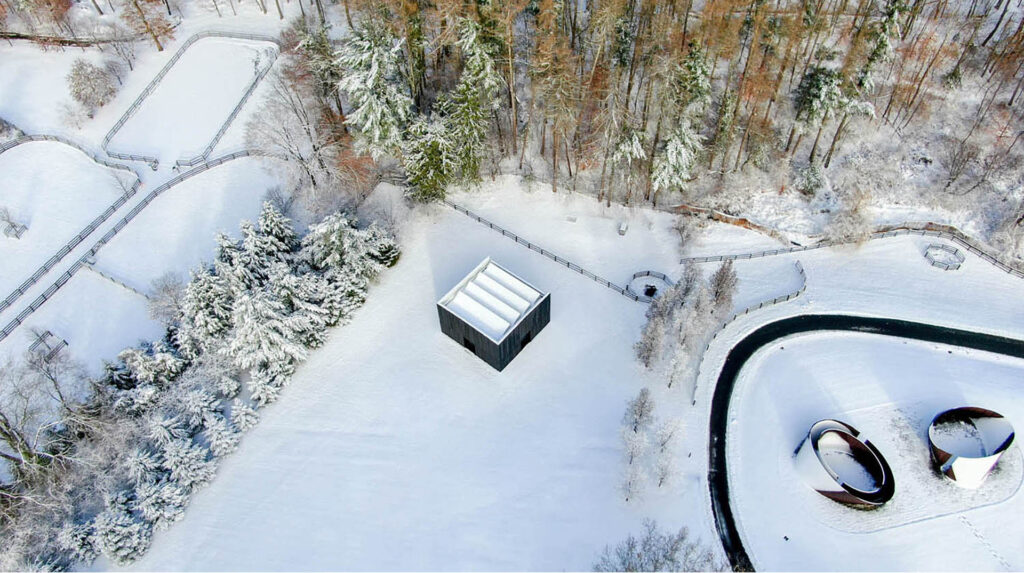
Balanced on its edge, the lower steel plate of London Cross runs diagonally between two corners of the room, while its counterpart, perched atop with a point load at midpoint, runs at right angles to it. To this extent, the lower plate defines a plane that bisects the pavilion into two galleries, with a bilateral symmetry along its axis. Across this axis, the two doors to enter each gallery and the two windows of different views are mirrored, as well as the upper plate in its regular geometry.
The exception to this bilateral symmetry is the sawtooth roof, with skylights facing 20 degrees east of True North. The views established from the South gallery through these skylights are reminiscent of the outdoor installations of Serra, while the indirect lighting through double-glazed windows separated by angled diffusers and insulated with roof panels is distributed optimally throughout the year. The hard edges of the steel sculptural plates are countered by the consequent softness of light.
The openings, two doors and two windows that mirror each other across the plane of the lower plate, share a uniform height of nine feet, rising just above the lower beam. On the exterior, this height is delineated by a subtle cutting motion through the vertical panels of the Shou Sugi Ban timber that wraps about the entire facade.
The openings, two doors and two windows that mirror each other across the plane of the lower plate, share a uniform height of nine feet, rising just above the lower beam. On the exterior, this height is delineated by a subtle cutting motion through the vertical panels of the Shou Sugi Ban timber that wraps about the entire facade.
The Shou Sugi Ban process renders the timber panels a deep charcoal-black with distinct lines of inherent textural uniqueness, and refers strongly to the artistic movement of Process Art, to which Serra belonged. The timber panels of the facade, in contrast to preserved mill scales of the steel plates of the sculpture, develop a natural patina with the course of time and weathering. The interior finish consists of hydrated lime plaster, eliminating the need for construction joints to create a smooth, uninterrupted gallery experience.
But the predominant material of the project is the space itself. Even Serra, who spent half a century experimenting with unconventional, industrial materials of rubber, neon and lead before his large-scale installations in steel, considered space to be his “primary material.”
Serra challenges the anthropomorphic space on this ground level; measuring seven feet high, the lower load-bearing plate inhibits the line of vision between the two galleries while retaining strong spatial relations between the two. Where an isolation would result from the convergence of vertical and horizontal elements, the open space just above the head brings an immediate awareness to the presence of the unseen side.
Project Gallery
